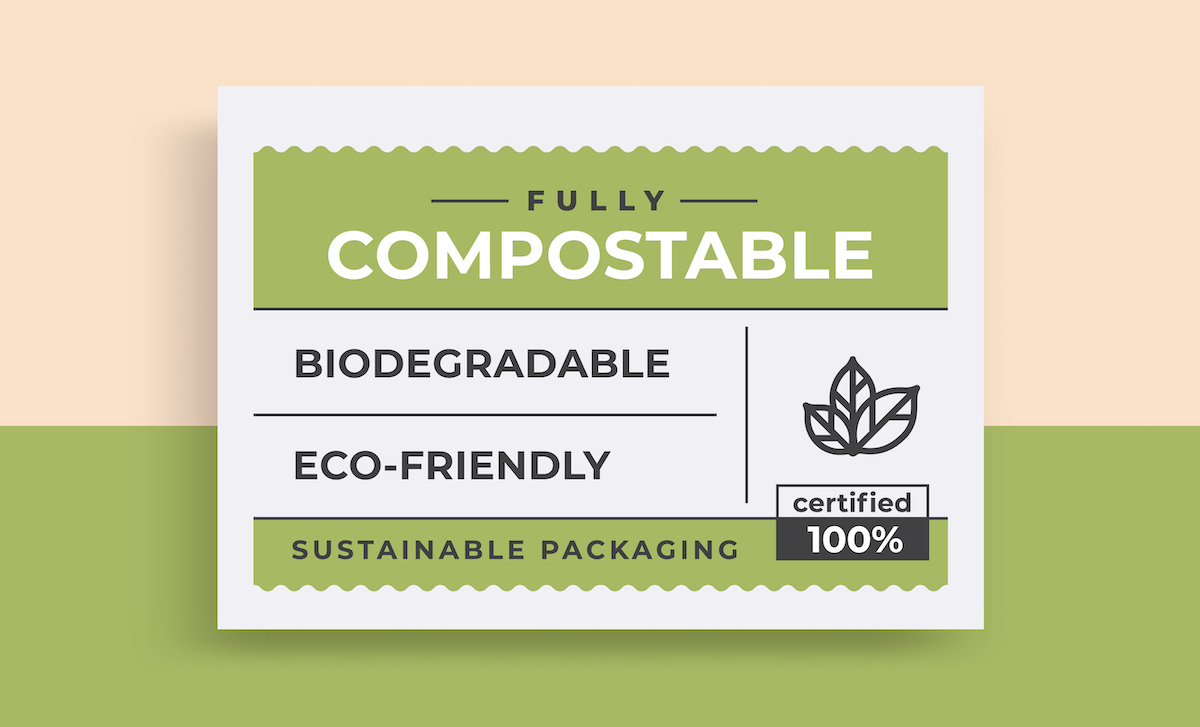The Science Behind Compostable Materials: Understanding Biodegradation in Packaging

Are you curious about the science behind compostable materials and how they break down in packaging? Understanding biodegradation is key to making informed decisions for reducing environmental impact. In this article, we will delve into the fascinating process of biodegradation, exploring the role of microorganisms and the conditions required for compostable materials to break down.
When it comes to compostable materials, have you ever wondered what actually happens during the process of biodegradation? It all starts with microorganisms, which play a crucial role in breaking down organic matter. These tiny organisms feast on the material, breaking it down into smaller compounds that can be absorbed by plants as nutrients. By understanding how microorganisms work their magic, we can gain insight into how compostable materials eventually turn into nutrient-rich soil.
Now that we have an idea of the importance of microorganisms in biodegradation, it’s essential to understand the specific conditions necessary for compostable materials to break down effectively. Factors such as temperature, moisture levels, and oxygen availability all influence the rate at which these materials decompose. By creating optimal conditions through proper waste management practices and using appropriate packaging solutions, we can contribute to a more sustainable future while minimizing our environmental footprint. So let’s dive deeper into the science behind compostable materials and discover how they can help us achieve a greener world.
The Process of Biodegradation
Biodegradation is the fascinating process through which packaging materials break down naturally, returning to the Earth and reducing our impact on the environment. When you dispose of compostable packaging, like food containers or compostable zipper bags made from plant-based materials, they undergo a series of biological and chemical changes. Microorganisms, such as bacteria and fungi, play a crucial role in this process by breaking down the complex molecular structure of the material into simpler compounds.
These microorganisms secrete enzymes that act as catalysts, accelerating the degradation process. The enzymes break down large molecules into smaller ones that can be easily consumed by other organisms. Over time, these smaller compounds continue to decompose until they ultimately become carbon dioxide, water, and biomass. This transformation not only reduces waste but also helps enrich the soil with valuable nutrients for plants to thrive. By understanding how biodegradation occurs in packaging materials, we can make informed decisions about using compostable options and contribute towards building a more sustainable future.
SEE ALSO: Go Organic with Google to Improve Search Results
Microorganisms and Their Role in Biodegradation
Microorganisms play a crucial role in breaking down organic matter and contributing to the biodegradation process. These tiny living organisms, such as bacteria and fungi, have the ability to break down complex molecules into simpler forms through their metabolic activities. They secrete enzymes that help in the decomposition of organic materials, converting them into smaller compounds that can be easily absorbed by plants or other microorganisms.

In the world of biodegradable packaging, microorganisms are essential for the breakdown of compostable materials. When these materials end up in a composting facility or a natural environment with sufficient moisture and oxygen, microorganisms start to colonize on their surface. The presence of these microorganisms initiates the degradation process by releasing enzymes that break down polymers like starch or cellulose into simple sugars. This is where two sub-lists come into play:
- Bacteria: Bacteria are one of the primary decomposers responsible for breaking down organic matter. They can produce a wide range of enzymes capable of degrading various polymers found in packaging materials.
- Aerobic Bacteria: These bacteria require oxygen to function and are commonly found in compost piles or aerobic environments.
- Anaerobic Bacteria: In contrast, anaerobic bacteria thrive in oxygen-deprived conditions such as landfills or submerged environments.
- Fungi: Another group of important decomposers is fungi. Fungi, including molds and yeasts, possess powerful enzymatic capabilities that allow them to break down complex carbon-based compounds like lignin and chitin.
- White-Rot Fungi: These fungi specialize in breaking down lignin present in woody materials like paper or cardboard.
- Brown-Rot Fungi: Brown-rot fungi target cellulose instead and are commonly found in degrading plant debris.
By understanding the role microorganisms play in biodegradation, scientists can design more effective compostable packaging materials that can be efficiently broken down by these natural processes.
Conditions for Compostable Materials to Break Down
To ensure that compostable materials break down efficiently, it’s crucial to create the right conditions for decomposition. The process of biodegradation relies on a combination of factors such as temperature, moisture, oxygen, and microbial activity. By controlling these conditions, we can optimize the breakdown of compostable materials and minimize the time it takes for them to fully degrade.
Temperature plays a vital role in the decomposition process. Composting typically occurs within a temperature range of 110°F to 160°F (43°C to 71°C). This elevated temperature helps accelerate microbial activity and speeds up the breakdown of organic matter. Maintaining proper moisture levels is equally important. Compost piles should be kept moist but not overly saturated. A moisture content between 40% and 60% provides an ideal environment for microorganisms to thrive and carry out their decomposing functions.
Incorporating oxygen into the composting system is essential for aerobic decomposition. Oxygen allows aerobic bacteria to flourish, which are responsible for breaking down complex organic compounds into simpler forms. Turning or aerating the compost pile regularly ensures an adequate supply of oxygen throughout the material. Lastly, microbial activity is crucial in breaking down organic matter during composting. Microorganisms like bacteria and fungi feed on carbon-based materials present in compostable packaging, converting them into humus – a nutrient-rich substance that enriches soil fertility.
| Factors | Ideal Range |
|---|---|
| Temperature | 110°F – 160°F (43°C – 71°C) |
| Moisture Content | 40% – 60% |
| Oxygen Levels | Sufficient supply through regular turning or aerating |
| Microbial Activity | Presence of beneficial bacteria and fungi |
Creating these optimal conditions ensures that compostable materials can effectively break down into their natural components, contributing to a more sustainable waste management system while minimizing environmental impact.
Benefits of Composting and Sustainable Packaging
Imagine how composting can transform your waste into nutrient-rich soil and sustainable packaging that nourishes our planet. Composting offers a multitude of benefits for both the environment and society as a whole. Firstly, composting reduces landfill waste by diverting organic materials from traditional waste streams. Instead of contributing to overflowing landfills, these materials are broken down naturally through the composting process. By reducing landfill waste, we can decrease methane emissions, which is a potent greenhouse gas that contributes to climate change.
Secondly, composting creates nutrient-rich soil that can be used in agriculture and gardening. The decomposition of organic materials during composting produces a dark, crumbly substance known as humus. Humus is an excellent soil conditioner as it improves soil structure, retains moisture, and provides essential nutrients for plant growth. By using compost as fertilizer instead of chemical alternatives, we can promote healthier crops while minimizing the use of harmful chemicals that can harm ecosystems.
SEE ALSO: How to Run a More Eco-Friendly Business
In addition to its environmental benefits, composting also plays a vital role in sustainable packaging. Compostable materials offer an alternative to traditional single-use plastic packaging that takes centuries to decompose. These biodegradable materials break down more quickly during the composting process and do not leave behind toxic residues like some plastics do. By choosing sustainable packaging options made from compostable materials, we can reduce our reliance on non-renewable resources and minimize the negative impacts associated with plastic pollution.
Overall, embracing composting and sustainable packaging brings numerous advantages to our planet and communities. It helps reduce landfill waste, mitigate climate change by decreasing methane emissions, enriches soil fertility for agriculture and gardening purposes, and reduces dependence on harmful plastics. By incorporating these practices into our daily lives, we contribute towards building a more sustainable future for generations to come.
Making Informed Decisions for Environmental Impact Reduction
When making choices that impact the environment, it’s important to be well-informed and consider the long-term effects. Here are four key factors to consider when making decisions for environmental impact reduction:
- Research: Take the time to research and understand the materials being used in products or packaging. Look for information on how they are made, how they break down, and if they can be recycled or composted. This knowledge will help you make informed choices that align with your environmental values.
- Life Cycle Assessment: Consider the entire life cycle of a product or material, from production to disposal. This includes evaluating energy use, greenhouse gas emissions, and waste generation throughout each stage. By understanding the full picture, you can choose options that have lower environmental impacts.
- Certification Standards: Look for certifications such as “compostable” or “biodegradable” that ensure a product meets specific standards for environmentally friendly disposal. These certifications provide reassurance that the product will break down properly without leaving harmful residues behind.
- Support Sustainable Practices: Choose companies and brands that prioritize sustainability and actively work towards reducing their environmental footprint. By supporting these businesses, you contribute to creating demand for more eco-friendly options and encourage others to follow suit.
By following these guidelines, you can make informed decisions that contribute to reducing your environmental impact in meaningful ways. Remember, every choice matters when it comes to protecting our planet for future generations.
Conclusion
In conclusion, understanding the science behind compostable materials and biodegradation is crucial in making informed decisions for reducing environmental impact. By grasping the process of biodegradation, you can appreciate how microorganisms play a vital role in breaking down compostable packaging. It is important to create optimal conditions for these materials to break down, such as providing enough moisture and oxygen.
Composting not only helps divert waste from landfills but also contributes to sustainable packaging solutions. By choosing compostable materials, you are actively participating in the circular economy and promoting a more eco-friendly future. So next time you make a purchase or dispose of packaging, consider the benefits of composting and opt for environmentally friendly options that contribute to reducing our carbon footprint.








